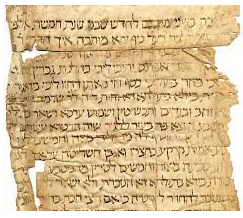April 7, 2021 by
Read on for article
It is well-known that a number of first convicts transported to Australia were Jewish. What is less known is the problems that this created for Jewish marriage and divorce in the nineteenth century.

Early Sydney
In fact, the first-ever Beit Din (now known as Beth Din), or religious Jewish court, was convened in Australia in 1864 for the sole purpose of effecting a divorce and arranging a gett, for a Jewish couple that wished to legally separate.
As far back as 1831, the London Beit Din was confronted with issues surrounding granting divorces, especially when one or other had been transported to a place without a formal Jewish legal body.
One early case presented to the London dayanim (judges) concerned a Jewish widow named Sarah Levy. Her husband had passed away, but as the couple was childless, she was, according to a set of Jewish laws known as Yibbun, obligated to marry her husband’s unmarried brother, unless he refused and released her from the obligation.
Often a refusal for divorce would be given but, in this case, Sarah’s brother-in-law, Yehuda bar Zanvil, had been transported to Australia eight years earlier, and no one had heard from him since, giving the widow the dreaded aguna status of a ‘chained’ woman who cannot remarry.
British Common Law allowed for a person ‘who had not been heard of’ to be declared dead after seven years, allowing for women to remarry. In order to establish halachically that Yehudah was dead, the Beit Din would need to hear testimony from at least two witnesses.
Three women gave testimony, all offering hearsay evidence: One had heard that Yehuda’s step-father was dead; another had heard that his mother was mourning; a third had received a letter describing Yehuda’s death aboard a convict ship. These testimonies were acceptable to the Beit Din and Sarah was released from her aguna status and free to remarry.

Early Ketubah
Next came the issue of couples who did not wish to divorce, but wanted to take preventative measures against aguna status: this mainly being a separation because of transportation or imprisonment.
The London Beit Din convened in order that the husband give his wife a gett. This meant that the wife would not remarry until seven years had elapsed. If a husband returned in that time, the couple could remarry. If he didn’t, she would be free to marry someone else. This was a good outcome.
In 1830 the London Beit Din was presented with a case that led to the establishment of Australia’s Beit Din. Minke bat Yehudi Leib (Amelia Samuels) appeared before the judges and requested that an agent be appointed to effect her divorce from her husband who was living in Sydney. R. Aaron Levy, a talented scribe and dayan, was appointed, and agreed to travel to Sydney to take up this serious task. He had to first find the husband, write a gett, convene a Beit Din of three judges and two witnesses, and ensure the process was completely kosher. Fortunately, he succeeded. The husband, Samuel Levy/Levi, a counterfeiter with many aliases, had married in 1801 and he was transported in 1808. Aaron Levy saw the case through and Minke received her gett. He returned to London a year later.
Aaron Levy performed other duties whilst in Sydney and, is known, to have written at least one ketubah. With Australia’s Beit Din in place, transportation having ended in 1868, as well as the strange era of circumstances that Jewish divorces were conducted.
The Australian Jewish Historical Society is the keeper of archives from the arrival of the First Fleet in 1788 right up to today. Whether you are searching for an academic resource, an event, a picture or an article, AJHS can help you find that piece of historical material. The AJHS welcomes your contributions to the archives. If you are a descendent of someone of interest with a story to tell, or you have memorabilia which might be of significance for the archives, please make contact via www.ajhs.com.au or its Facebook page.

Related posts:
Views: 0
 RSS Feed
RSS Feed

















 April 7th, 2021
April 7th, 2021  FAKE NEWS for the Zionist agenda
FAKE NEWS for the Zionist agenda 



 Posted in
Posted in  Tags:
Tags: 
















